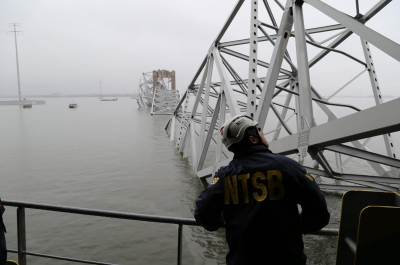(Bloomberg) -- The world’s biggest oil explorers are fighting a U.S. plan to toughen offshore drilling rules that Exxon Mobil Corp. said will cost $25 billion over 10 years and render many offshore discoveries worthless.
The Obama administration will issue the sweeping new regulations Thursday as part of an effort to reduce the number of well blowouts after the explosion aboard the Deepwater Horizon rig in 2010. The government has pegged the rules’ costs at less than $1 billion.
The changes would arrive amid the worst oil slump in a generation. ConocoPhillips and Chevron Corp. have already abandoned some Gulf prospects because they wouldn’t be profitable at current prices. If the proposals are enacted, exploration outlays in the Gulf will tumble by 70% over the next two decades, wiping out as many as 190,000 jobs, according to consulting firm Wood Mackenzie Ltd.
“The Gulf of Mexico is already in a deep downturn as a result of lower oil prices,” said Robin Shoemaker, an industry analyst at Keybanc Capital Markets Inc. “Oil companies and the service providers are trying to come up with ways to reduce costs so the idea that they can absorb any additional expenses — they’re not in that ballpark at all.”
The regulations, first proposed last year, have been in the final stage of review by the White House Office of Management and Budget. The proposal restricts the fluids pumped into wells, requires redundant safety devices and stipulates continuous monitoring from shore. The changes are needed because well blowouts have continued at about the same rate as before the explosion at BP Plc’s Macondo well in 2010 that killed 11 and spewed millions of gallons of crude, the government says.
Environmental groups say the new rules don’t go far enough to safeguard marine life and the people who depend on it for their livelihoods. Friends of the Earth has called on the government to halt all auctions of offshore drilling leases.
“There’s no such thing as safe offshore drilling,” said Marissa Knodel, a climate campaigner for the Washington-based group. “Tougher rules aren’t going to mitigate the human and environmental costs of allowing more drilling to occur.”
Government Shortcomings
In a closed-door meeting last month, Exxon, the largest driller in the U.S., said the government underestimated the time and complexity needed to implement the rules, ignored the reduced production and stranded reserves that would result, and added unneeded operations that could boost risks rather than decrease them. The comments came in slides Exxon presented at the meeting and were posted on a government website.
The Deepwater Horizon disaster looms large over federal attempts to tighten requirements. The blowout at the $153 million well sank a $365 million drillship, paralyzed the Gulf region for months and cost BP more than $40 billion in penalties, compensation and restoration costs.
Exxon, in the meeting with White House and Interior Department officials on March 7, outlined its assertion that the rules will cost $25 billion and argued they would increase the danger of a blowout by wresting decision-making from on-site engineers with decades of experience.
Increasing Risk
Some rock formations can’t handle the heft of drilling fluids that would be required, while the proposal for pouring cement around the steel pipe lining a well would boost the risk of dangerous air pockets and cracks, according to slides Exxon presented at the meeting.
Emily Cain, an Office of Management and Budget spokeswoman, declined to comment. Bill Holbrook, an Exxon spokesman, also declined to comment for this article.
“It is abundantly clear that despite post-Macondo improvements in safety and technological advancements, there are still issues that must be addressed,” Brian Salerno, director of the Bureau of Safety and Environmental Enforcement, said in December testimony before the Senate Energy and Natural Resources Committee.
In 2013 and 2014, drillers in the Gulf lost control of eight and seven wells, respectively, according to Salerno. One incident resulted in a blowout “that caused a massive explosion and fire on the rig,” he told the senators.
More Dire
Exxon’s $25 billion warning isn’t even the most dire forecast out there. An analysis conducted by consulting firms Quest Offshore and Blade Energy Partners on behalf of the industry-funded American Petroleum Institute estimated extra costs over 10 years at $31.8 billion and result in the the loss of the equivalent of 500,000 barrels of crude a day by 2030.
Crude output from the U.S sector of the Gulf will reach a record 1.91 million barrels a day by the end of next year as discoveries dating as far back as 2005 come online after years of design, drilling and construction work, the Energy Information Administration said last month.
In the March 7 meeting, Exxon cited an industry review of 175 Gulf wells drilled since 2010 that concluded 63% couldn’t be drilled as designed if the new rules had been in place.
Other explorers, rig operators and equipment makers who sought and conducted private discussions with bureau personnel included Chevron, Royal Dutch Shell Plc, Halliburton Co., Murphy Oil Corp., GE Oil & Gas, National Oilwell Varco Inc. and Transocean Ltd., according to attendance logs published on the government website.
Environmental organizations including The Wilderness Society, the Sierra Club and the Southern Environmental Law Center also were granted closed-door meetings with White House and Interior Department officials to press their concerns, according to the attendance logs.
A requirement that would set a safe drilling margin was a major point of contention. Concerns evolved over time, and, in the end, were less about the provision and more about how the agency would interpret it.
“We heard them loud and clear that that was a big issue,” Allyson Anderson Book, associate director of the Bureau of Safety and Environmental Enforcement, said. “We have taken that to heart,” she said, “and I think it will help them down the road when they have an understanding of how it would be implemented.”





